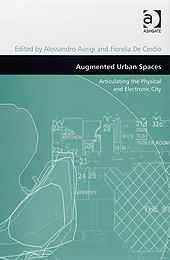Augmented humans are at the epicenter of a scenario for the future that Ray Kurzweil has been popularizing for over 20 years. To recap the central thesis of his life's work, including the book The Singularity is Near published in 2005, Kurzweil promotes the notion that technological singularity is the inevitable result of our research on genetics, nanotechnology and robotics (including artificial intelligence). Whether one believes the trends to which he points will go as far as Kurzweil predicts (in which some of those born human and who live among us today will live far longer than any earlier specimens of our race and will, at the same time, benefit or suffer from "superintelligence") or not, research is continuing unabated in these domains.
Some findings of basic and applied research in areas at the core of the Singularity will be reported by those who will present papers during the third annual Augmented Human conference. This conference whose proceedings will later be published by the ACM focuses on augmenting human capabilities through technology for increased well-being and enjoyable human experience. The program committee solicited contributions on the following topics (this list pasted directly from the conference call for papers, which closed earlier this week):
- Augmented and Mixed Reality
- Internet of Things
- Augmented Sport
- Sensors and Hardware
- Wearable Computing
- Augmented Health
- Augmented Well-being
- Smart artifacts & Smart Textiles
- Augmented Tourism and Games
- Ubiquitous Computing
- Bionics and Biomechanics
- Training/Rehabilitation Technology
- Exoskeletons
- Brain Computer Interface
- Augmented Context-Awareness
- Augmented Fashion
- Augmented Art
- Safety, Ethics and Legal Aspects
- Security and Privacy
I'd like to hear what these folks are doing. However, I'd also (maybe even more) like meet and get acquainted with flesh and blood Augmented Humans. One whom I met a few years ago at a conference is Rob Spence. Rob is a documentary filmmaker who lost an eye and decided, with the help of Steve Mann, one of the original first-person webcamera video streamers, to have a wireless video camera fitted into his prosthetic eye. Rob kept a blog about the experience for several years but moved it three years ago this month to another host and seems to have been closed. Here's a 2010 interview with Rob published on the Singularity University's blog. According to Rob Spence's web site, visited today when researching this post, he's working on a documentary for the Canadian Film Board. So, at least for now, his story is private.
I'm currently reading Hard-Boiled Wonderland and the End of the World, a work of fiction by Haruki Murakami. The central character (unknowingly) has his brain rewired as part of an experiment and it (his brain) is programmed for him to live the rest of his life "reading" dreams from the skulls of unicorns. It's a gracefully written story. Although stories of people whose bodies and minds have been altered to become "augmented humans" make for excellent works of fiction, of a blog, and probably a documentary, I suspect that the paths humans pursue towards this goal are filled with failed attempts. Interesting to note the last two bullets on the list of topics covered at the AHC. There's confirmation of my concern.
At Laval Virtual, the largest industry event dedicated exclusively to Virtual Reality, Masahiko Inami, a professor in the School of Media Design at the Keio University (KMD), Japan, is giving a talk entitled "Initial Step Towards Augmented Human". Here's the session description:
What are the challenges in creating interfaces that allow a user to intuitively express his/her intentions? Today's HCI systems are limited, and exploit only visual and auditory sensations. However, in daily life, we exploit a variety of input and output modalities, and modalities that involve contact with our bodies can dramatically affect our ability to experience and express ourselves in physical and virtual worlds. Using modern biological understanding of sensation, emerging electronic devices, and agile computational methods, we now have an opportunity to design a new generation of 'intimate interaction' technologies.
This talk will present several approaches that use multi/cross modal interfaces for enhancing human I/O. They include Optical Camouflage, Stop-Motion Goggle, Galvanic Vestibular Stimulation and Chewing Jockey.
Although probably less shocking and hair-raising than the talks at the third AHC, this session should also be very thought-provoking and practical for those working in the field of Virtual Reality. I'll try to make it to both of these events to get fully informed about all aspects of Augmented Humans.


